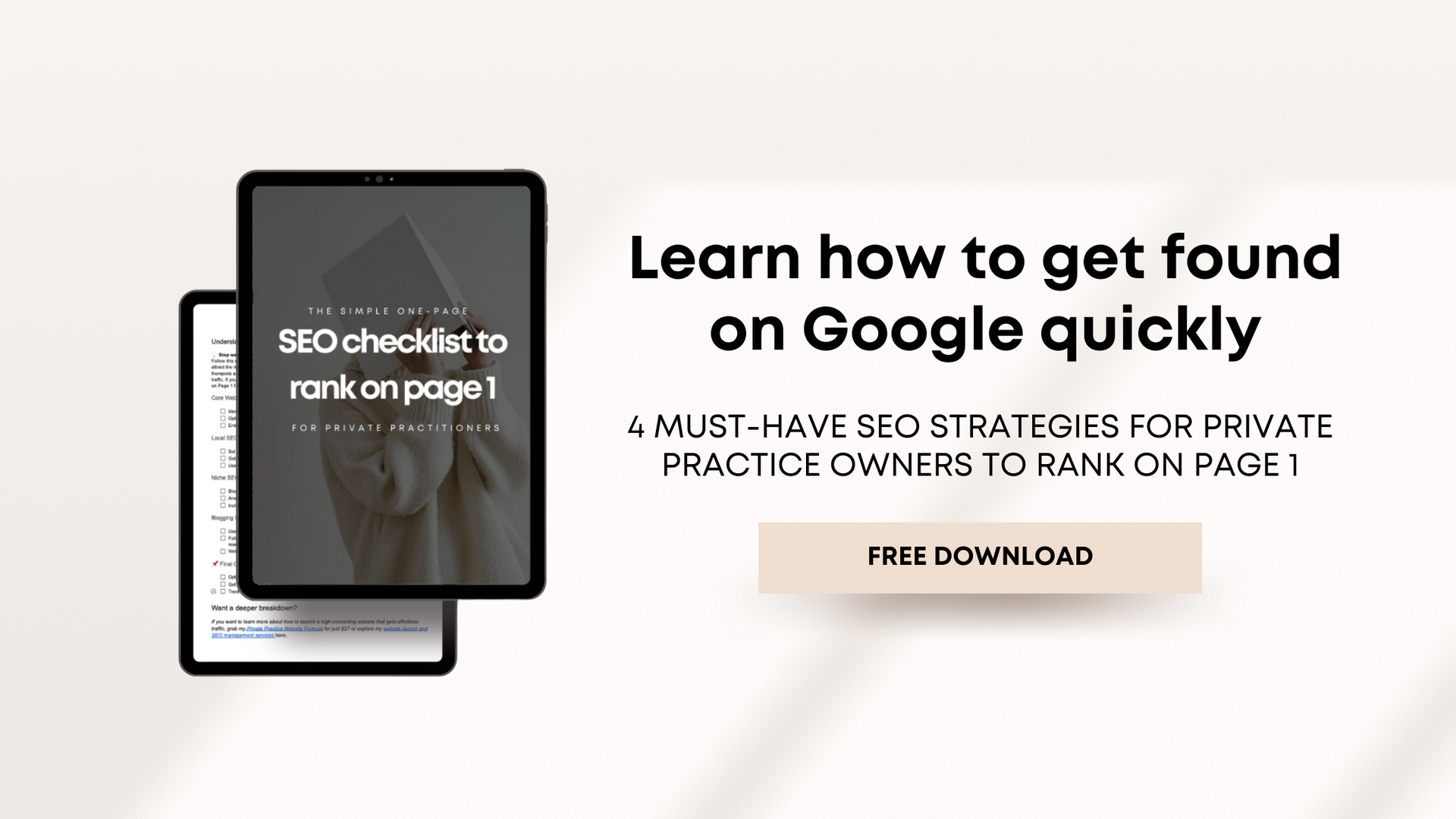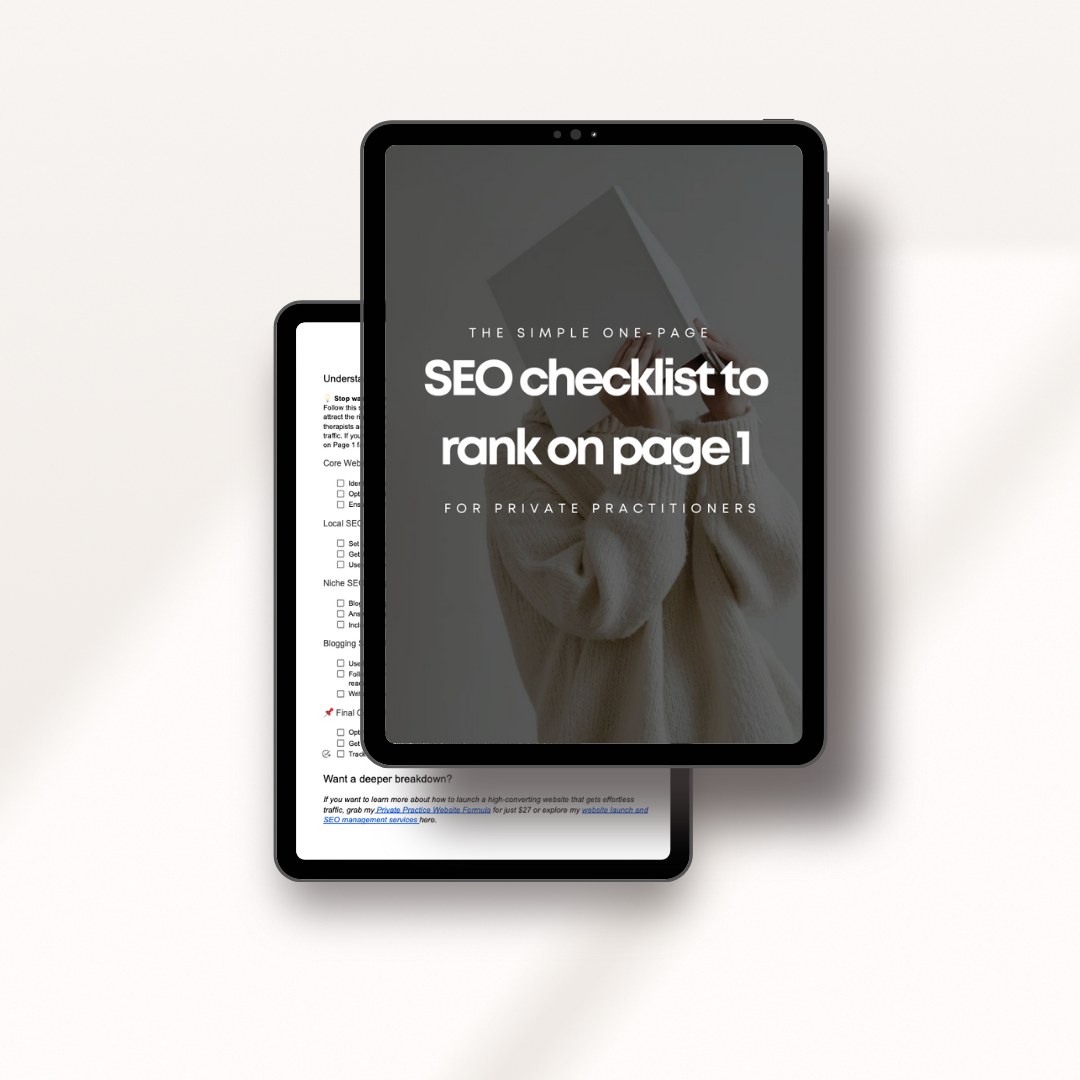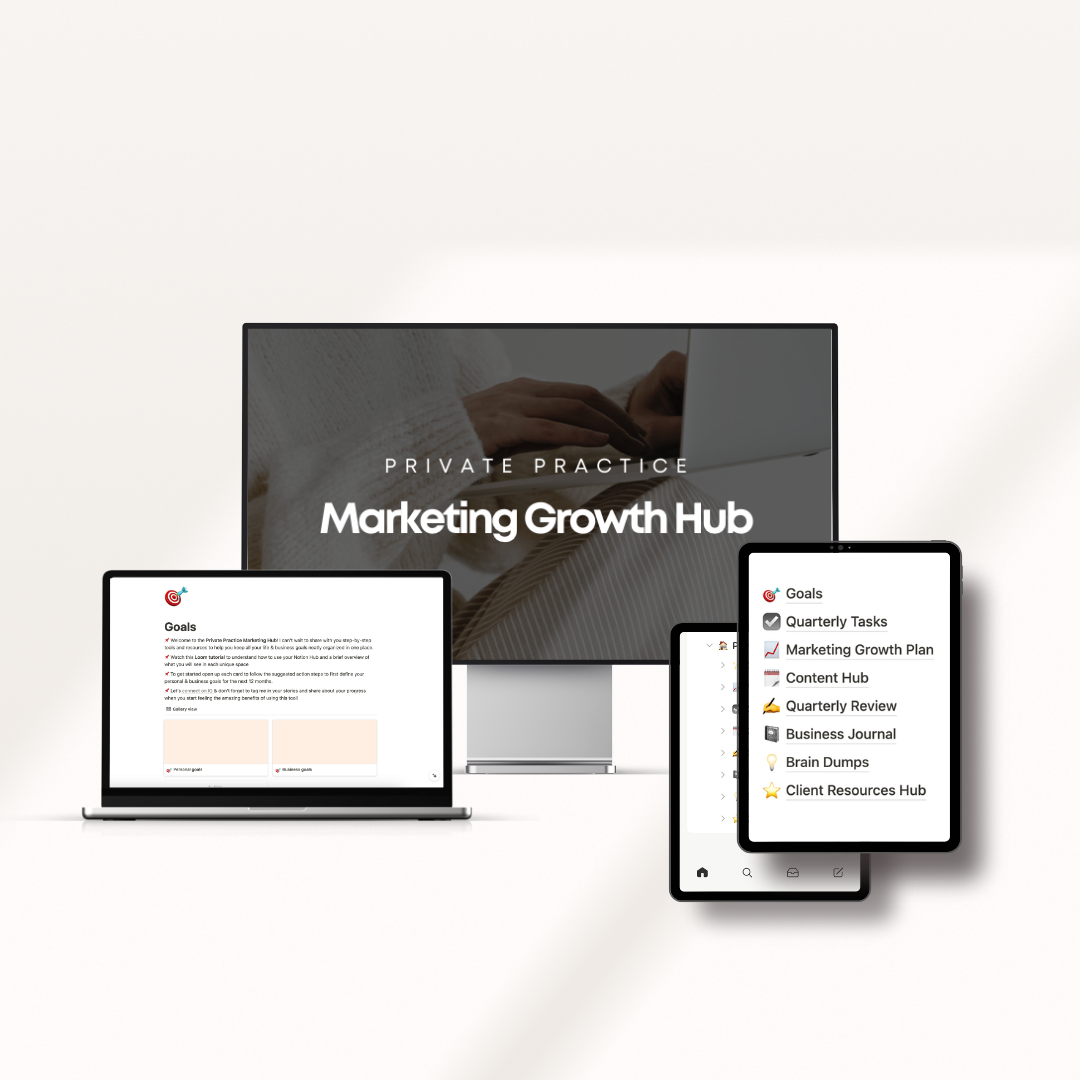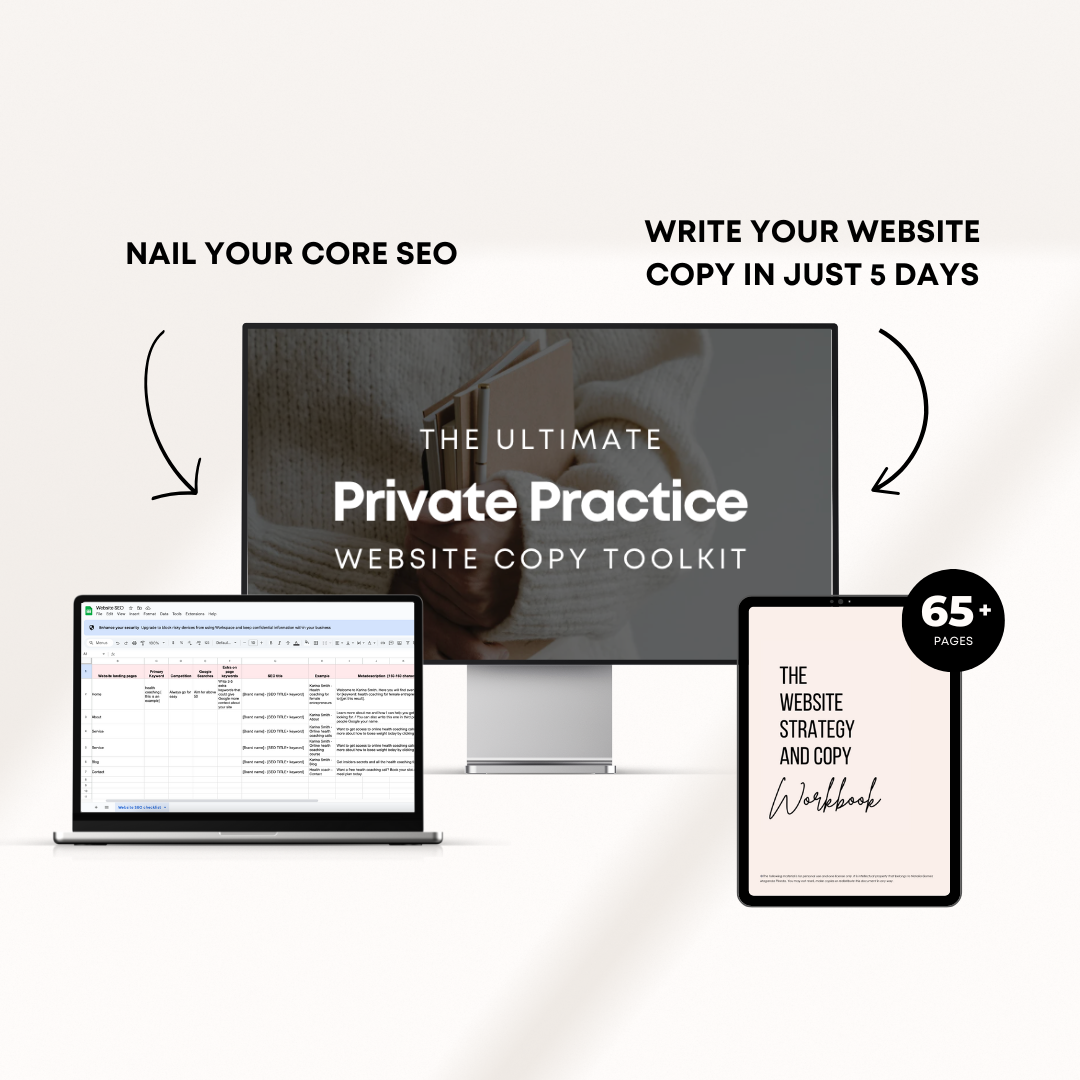How to make $100k as a therapist without seeing 20+ clients a week
Are you feeling stretched thin, juggling back-to-back sessions with barely enough time to catch your breath? Many therapists find themselves stuck in a cycle of overwork, trying to meet financial goals by packing their schedules with as many clients as possible. While it might seem like the only way to increase your income, this approach often leads to burnout and limits your ability to show up as your best self for your clients.
Here’s the truth: making more money as a therapist doesn’t have to mean working harder or seeing more clients. With the right strategies, you can create a thriving practice that gives you more time, freedom, and financial security—all without sacrificing your mental health. Let’s dive into how you can break free from the traditional therapy model and explore new ways to grow your income.
How to make more money as a therapist
Shift from hourly rates to value-based pricing
The traditional hourly rate model puts a ceiling on your income. There are only so many hours in a week, which means you’re trading your time for money—often at a rate that doesn’t reflect the true value of your work. By transitioning to value-based pricing, you can package your services to meet specific client goals and charge for the outcome, not just the time.
For example, instead of offering individual sessions at $100 each, you might offer a 12-week anxiety management program that includes weekly sessions, resources, and email support for $1,500. This approach benefits both you and your clients: they get a clear path to results, and you get a predictable income.
Offer specialized services
Specializing in a specific niche can significantly increase your earning potential. Clients are willing to pay more for a therapist who deeply understands their unique challenges, whether it’s trauma therapy, couples counseling, or ADHD coaching.
When you focus on a niche, you not only stand out in a crowded market but also position yourself as an expert. This expertise justifies higher rates and attracts clients who are eager to invest in your services.
Leverage group therapy or workshops
Group therapy and workshops are powerful ways to scale your practice. Instead of working with one client at a time, you can serve multiple clients in the same hour while providing them with the added benefit of peer support.
For example, a six-week group focused on mindfulness for stress reduction can accommodate 8–10 participants. At $50 per participant per session, you could earn $400–$500 per hour, far exceeding the income from individual sessions. Plus, workshops and groups often require less emotional energy since the interaction is shared among participants.
Expand beyond 1:1 services
Thinking beyond traditional therapy sessions can open up new income opportunities. For instance, you might consult with other therapists, helping them develop their practices or train them in your specialized approach.
Another option is corporate wellness programs, where you deliver workshops or ongoing mental health support to employees. Companies are often willing to pay a premium for these services, and they can be a highly rewarding way to expand your reach.
How to make $100K per year and plan your income
Calculate your desired income and work backward
To hit $100K annually, you need approximately $8,333 per month. Start by breaking this goal into manageable pieces. How many clients or services will you need to reach this amount?
For example, if you’re offering a $1,500 program, you’ll need about six clients per month. If you mix this with group therapy or workshops, you can further reduce the number of 1:1 clients required.
Reduce client load while increasing rates
Increasing your rates can feel intimidating, but it’s a necessary step to earning more while working less. Evaluate your current pricing and compare it to industry standards. If you’ve been charging $100 per session, consider raising it to $150 or more, especially if you’ve gained experience or specialized training.
Communicate rate changes with transparency, highlighting the added value clients will receive. Most clients who value your work will understand and accept the change.
Offer premium experiences
Premium experiences like VIP therapy days can dramatically increase your income per client. For example, a VIP day might include an intensive full-day session with follow-up support, priced at $2,000 or more.
These services cater to clients who value personalized, high-touch experiences and are willing to pay for convenience and results.
Track and manage income streams
Keeping track of your income streams is critical to understanding what works and where to focus your energy. Use tools like QuickBooks or a simple spreadsheet to monitor your earnings and identify your most profitable offerings. This insight will help you optimize your practice for maximum revenue.

Income streams for therapists
Passive income ideas for therapists
Passive income allows you to earn money without directly trading your time. Creating and selling digital products, like self-help workbooks or guided meditations, is a great way to reach a broader audience while generating income.
For example, you might create a course on coping strategies for anxiety. Once the course is created, it can be sold repeatedly with minimal effort, providing a steady revenue stream.
Scalable services for sustainable growth
Online memberships and self-paced courses are scalable options that allow you to serve more people without increasing your workload. A membership program might include access to exclusive content, monthly group calls, or a community forum, all for a recurring fee.
This model not only provides consistent income but also builds a loyal community of clients who value your support.
Affiliate marketing or partnerships
Affiliate marketing involves promoting products or services you trust and earning a commission for each sale. For example, you could recommend a mindfulness app or a book on mental health to your audience, earning a small percentage of each purchase.
The key is to ensure the partnerships align with your values and genuinely benefit your clients.
Speaking engagements and corporate consulting
Speaking engagements and corporate consulting allow you to leverage your expertise in new ways. For instance, you might deliver a mental health workshop for a company or speak at a conference on your niche area. These opportunities not only boost your income but also position you as a thought leader in your field.
Marketing your services for higher revenue
Build a website that converts
A professional website is essential for attracting high-value clients. It’s your digital home, showcasing your expertise, services, and testimonials. A well-designed site with clear calls-to-action can guide visitors to book a session or join your programs.
Optimize for SEO
Search engine optimization (SEO) ensures potential clients find you online. By targeting keywords like “trauma therapist in [city],” you can rank higher in search results and attract local clients actively searching for your services. Blogging can further enhance your SEO by addressing common client questions and showcasing your knowledge.
Use social media strategically
Social media platforms like Instagram and LinkedIn can help you connect with potential clients and build your brand. Share content that highlights your expertise, such as mental health tips, client success stories (shared ethically), and insights into your practice.
Why having a money-making website is crucial for your income
Your website should be more than just an online brochure—it should be a powerful tool that attracts leads, nurtures trust, and drives conversions. If your current website isn’t making you money, it’s likely missing one (or more) of these three critical elements:
It’s not optimized for conversion
Your website needs to guide visitors toward taking action, whether that’s booking a consultation, signing up for a workshop, or purchasing a digital product. Without clear calls-to-action and a user-friendly design, potential clients might leave before taking the next step.
It lacks a lead generation strategy
A money-making website actively collects leads and builds your audience. This could mean offering free resources, like a guide or webinar, in exchange for email addresses. Without a system to capture and nurture leads, you’re leaving opportunities on the table.
It doesn’t have a traffic strategy
Even the most beautifully designed website won’t generate income if no one visits it. SEO, blogging, and social media are essential tools to drive traffic to your site, ensuring that the right people find your services.
Let’s launch a money-making website
A well-optimized website isn’t just a bonus—it’s essential for creating a thriving practice with multiple income streams. If your current site isn’t bringing in clients, let’s fix that. I specialize in designing websites for therapists, life coaches, and holistic practitioners that are built to convert, generate leads, and drive traffic.
Ready to transform your website into a money-making machine? Explore how we can create a website that supports your goals and grows your income.
Related reads:
- How to choose a profitable therapy niche to attract higher-paying clients
- Private practice therapist salary and tips for increasing your income
- How much is Psychology today? Pros and cons
- The ultimate guide to branding your therapy and private practice
- 40 marketing ideas for therapists

* AI Disclosure: This content may contain sections generated with AI with the purpose of providing you with condensed helpful and relevant content, however all personal opinions are 100% human made as well as the blog post structure, outline and key takeaways.
* Affiliate Disclosure: Some of the links on www.nataliamaganda.com may contain affiliate links meaning that I will get a commission for recommending products at no extra cost to you.

hello! i'm natalia
Latina, web design expert for mental health professionals.
I help ambitious life coaches, therapists and holistic leaders amplify their magic, gain visibility, and simplify their marketing efforts through strategic web design and content.
If you’re looking for an all-in-one system to manage your website, emails, funnels, and CRM, Go HighLevel (affiliate link) is the most powerful tool I’ve tested—and it’s built to grow with you.
On a tighter budget or just starting out? ThriveCart (affiliate link) offers a one-time payment option and easy checkout setups that still pack a punch for digital offers and automation. (Send me an email after your purchase and make sure to use my affiliate link)










